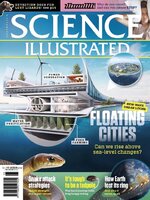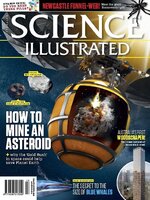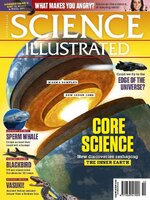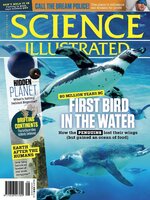Science Illustrated delivers natural science, break through discoveries and an understanding of the world for the entire family. Packed with stunning photography and in-depth editorial it’s a visually spectacular gateway to the world looking into the beginning of life to distant objects in the universe.
SUBSCRIBE & START SAVING NOW!
Science Illustrated
MEGAPIXEL HEART CELLS
An extra half-minute for Uranus • New methods and monitoring by researchers from US and European space agencies have discovered important new details about one of the largest planets in our Solar System.
New twists deliver faster optics • Parallel developments in Australia and the UK offer the possibility of sending more information further down optical communication cables.
Multiple secrets lie behind Maria’s longevity • Maria Branyas lived to be 117 years old. Researchers have tried to find her secret – and they think yoghurt may have had a role.
Huge fossil is an unknown life form • First described in 1843, an 8-metre-tall prehistoric organism has been puzzling scientists ever since. First thought a tree or fungus, new analysis says it is neither.
Phantom jellies flourish beneath Antarctic ice • Marine researchers have discovered a breathtaking enigmatic world that may have been hidden under 150 metres of ice for hundreds of years.
New antibiotic dug up in a Canadian backyard • A backyard discovery could help avoid millions of deaths that scientists fear could come from antibiotic multi-resistance.
Supervolcano ‘cap’ eases the pressure on Yellowstone • The supervolcano in Yellowstone National Park is controlled by a hidden mechanism that keeps the violent forces in check.
Reactor reaches a new milestone • ITER is a fusion reactor which hopes to lead the way to sustainable and safe energy. It has reached an important milestone.
How far does lightning travel in water? • “I saw on Survivor Australia vs The World that they pulled contestants out of a water challenge when there was lightning. Is it dangerous if lightning strikes the water? Do fish die?”
How do computer chips continue to get more powerful? • “Are new and faster computer chips all down to making things smaller or are there other advances? And is ‘Moore’s Law’ still holding up?”
How are tattoos removed? • Why does the colour of a tattoo stick so well, and how can it be removed again?
Can you get tanned if you sit in the shade? • And is sunscreen still necessary if you stay in the shade?
What happens to animal astronauts? • “Do the animals we launch into space die? And which animal was the first ‘zoonaut’?”
How does an incineration plant not melt?
…you can think your way to lower weight? • “I read that the brain accounts for a surprising amount of our total energy consumption. So can you lose weight by concentrating deeply, such as by playing chess?”
Why do mosquitoes mostly bite at night? • “I can walk around all day without getting bitten, but when the sun sets, the mosquitoes are there. Is it easier for mosquitoes to find us in the evening, or what is the explanation?”
How do planets maintain their orbits over millions of years? • “When Earth is furthest away from the Sun in its elliptical orbit, the gravitational pull must weaken. So why does Earth remain in its orbit?”
How hot can we get? • “What is the upper limit to the temperatures the human body can withstand before it collapses?”
Which is the smallest vertebrate?
Can ocean bacteria deal with oil pollution? • “I read your article on what caused the explosion and oil spill on the BP Deepwater Horizon in 2010, and the failed efforts to clean up. So where does the pollution that is not collected end up? Is it eventually broken down...

 Issue 118
Issue 118
 Issue 117
Issue 117
 Issue 116
Issue 116
 Issue 115
Issue 115
 Issue 114
Issue 114
 Issue 113
Issue 113
 Issue 112
Issue 112
 Issue 111
Issue 111
 Issue 110
Issue 110
 Issue 109
Issue 109
 Issue 108
Issue 108
 Issue 107
Issue 107
 Issue 106
Issue 106
 Issue 105
Issue 105
 Issue 104
Issue 104
 Issue 103
Issue 103
 Issue 102
Issue 102
 Issue 101
Issue 101
 Issue 100
Issue 100
 Issue 99
Issue 99
 Issue 98
Issue 98
 Issue 97
Issue 97
 Issue 96
Issue 96
 Issue 95
Issue 95